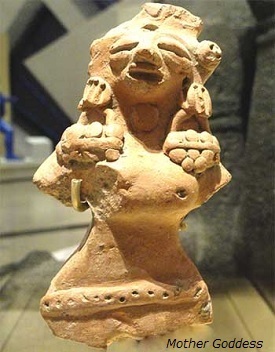
- Ancient Indian History - Home
- Study of Indian History
- Writing of Ancient Indian History
- Imperialist Historiography
- Historiography Nationalist Approach
- Marxist School of History
- Sources of Ancient Indian History
- Archaeological Sources
- Geographical Background
- Geography in Ancient Literature
- Stone Age Cultures
- Mesolithic Culture
- The Neolithic Age
- Chalcolithic Period of India
- Chalcolithic Culture In India
- Harappan Civilization
- Harappan Town Planning
- Harappan Crafts & Industries
- Harappan Culture
- Harappan Religion
- Harappan Chronology
- Vedic Civilization
- Vedic Society
- Vedic Politics
- Vedic Religion & Philosophy
- The Aryan Invasion
- Later Vedic Age
- Social System after Vedic Age
- Achievements of Indian Philosophy
- Evolution of Jainism
- Evolution of Buddhism
- Alexander’s Campaign in India
- Maurya Dynasty
- Kalinga War & its Impact
- Society & Economy during Mauryas
- Mauryan Governance
- Early History of South India
- Age of Smaller Dynasties
- Literature of Satavahana Period
- Society of Satavahana Period
- Economy of Satavahana Period
- Technology of Satavahana Period
- Chola Dynasty
- Pandya Dynasty
- Chera Dynasty
- Period of Foreign Invaders
- Gupta Period
- Decline of Guptas
- Governance of Gupta Period
- Literature of Gupta Period
- Economy in Gupta Period
- Science & Tech of Gupta Period
- India after the Gupta Period
- Period of Harsha
- South India during the Harsha Period
- Kadamba Dynasty
- History of Kamarupa
- India after Harsha
- Gurjara Pratiharas
- Palas of Bengal
- Rashtrakutas of Deccan
- Literature after the Harsha Period
- Society after the Harsha Period
- Economy after the Harsha Period
- Religion after the Harsha Period
- References & Disclaimer
Ancient Indian History - Harappan Religion
- There are generally two aspects of Harappan religion −
- Conceptual or philosophical and
- Practical or ritualistic.

- The available evidence indicates that the religion of the Indus people comprised of −
- Worship of the Mother Goddess;
- Worship of a male deity, probably of Lord Siva;
- Worship of animals, nature, semi human, or fabulous;
- Worship of trees in their natural state or of their indwelling spirits;
- Worship of inanimate stones or other objects, of linga and yoni symbol;
- Chrematheism as illustrated in the worship of the sacred "incense-burners";
- Faith in amulets and charms indicative of demonophobia; and
- Practice of yoga.
These characteristics suggest that the religion was mainly of an indigenous growth and "the lineal progenitor of Hinduism, which is characterized by most of the features.
A large number of female figurines of terracotta have been found, which are the representations of the Great Mother Goddess.
A striking rectangle sealing found at Harappa represents the Earth or Mother Goddess with a plant growing from her womb.
A male deity, which depiction Siva as Pasupati (i.e. the prototype of the historic Siva), is portrayed on a seal with three faces, seated on a low throne in the typical posture of a Yogi, with two animals on each side - elephant and tiger on right and rhinoceros and buffalo on left, and two deer standing under the throne.
A terracotta piece having linga and yoni in one piece found from Kalibangan. People of Kalibangan region were worshiped the symbolic representation of Siva and Sakti respectively.
A remarkable seal, found at Mohenjo Daro, standing between two branches of a pipal tree, represents the deity.
A large number of 'fire-altars' have been found from the sites located in Gujarat, Rajasthan, and Haryana. From Kalibangan, Lothal, and Banawali a number of 'fire-altars' have been found.
Swastika, a sacred symbol with Hindus, Buddhists, and Jaina has been depicted on seals, painting, and graffiti.
A large number of terracotta figurines depict the individuals in various yogic postures (asanas) indicating thereby that the Harappans practiced yoga.
Social Stratification
-
The Harappan society appears to have been divided into three sections, viz.
An elite class associated with the Citadel;
A well-to-do middle class; and
A relatively weaker section, occupying the lower town, which was generally fortified.
The Craftsmen and laborers normally were resided outside the fortified area.
It is, however, difficult to say whether these divisions were based purely on the economic factors or had a socio-religious basis.
At Kalibangan, it appears that the priests resided in the upper part of the citadel and performed rituals on fire altars in the lower part of it.
Political Setup
It is also difficult to ascertain that what kind of political setup was prevailed at the time of the Harappan civilization.
The entire area of Indus Empire was administered from one capital, with a few regional administrative centers or provincial capitals.
There were several independent states or kingdoms, each with cities like Mohenjo Daro in Sindh, Harappa in Punjab, Kalibangan in Rajasthan, and Lothal in Gujarat as their capitals.
During 1,000 B.C., the area was divided into sixteen Mahajanapadas each independent with its own capital.
Disposal of the Dead
Scattered burials, as well as discreet cemeteries, have been found at many major sites.
The skeletal remains are few in comparison to the size of settlements and the population that may have lived on them.
The general practice was that skeletons were placed in an extended position with the head towards the north. Earthen pots containing food grains, etc. were placed in the grave and, in some cases, the body was buried with ornaments.
Cremation was also practiced, which has been proved by many cinerary urns or other receptacles containing calcined human bones and ashes together with vessel offerings for the use of a dead person in the next life.